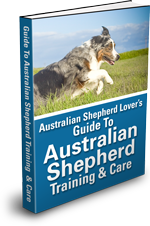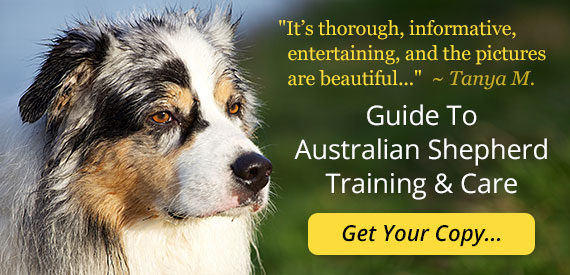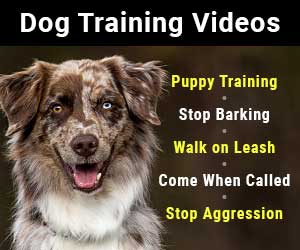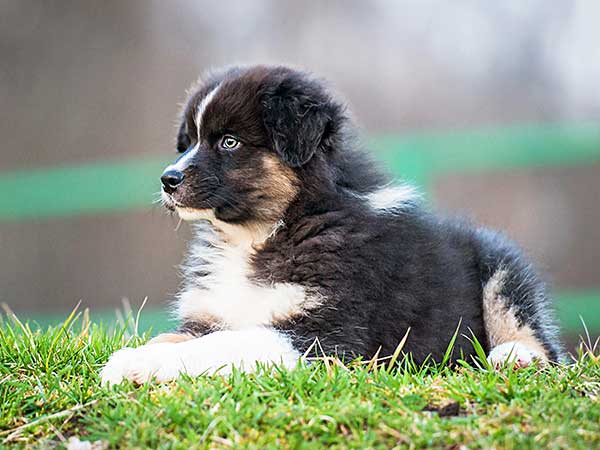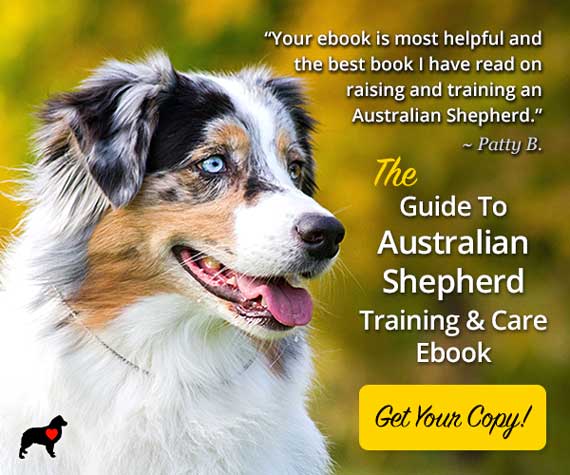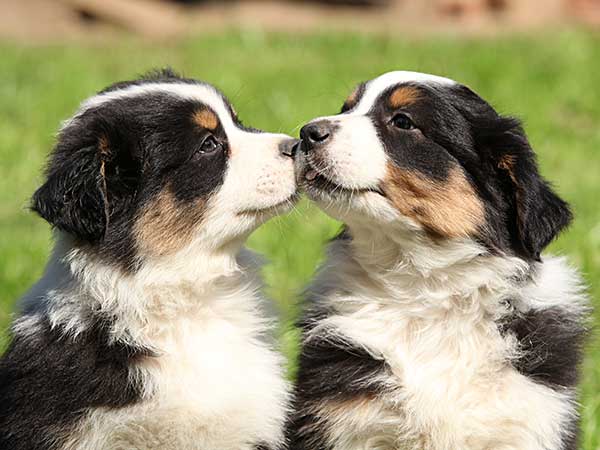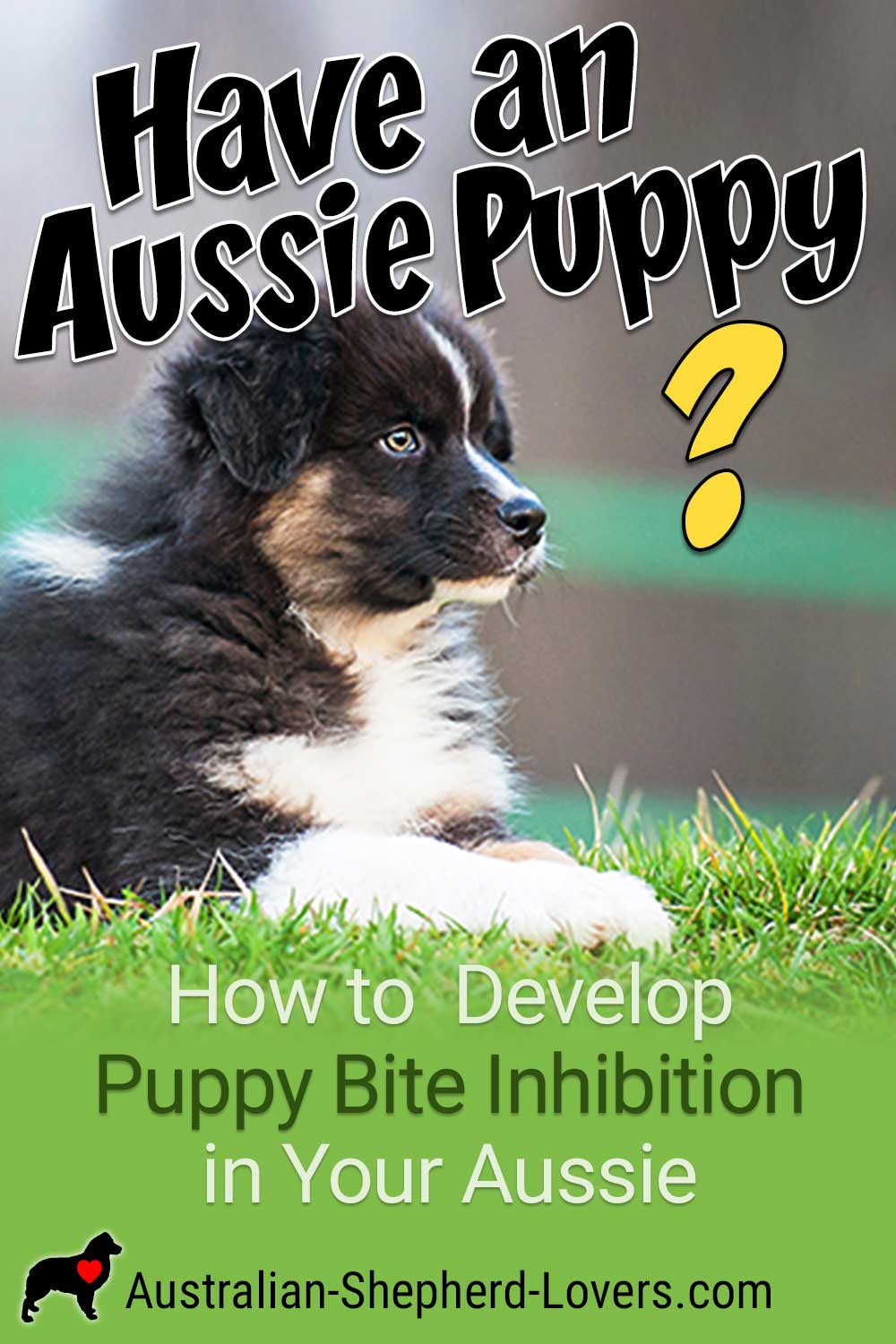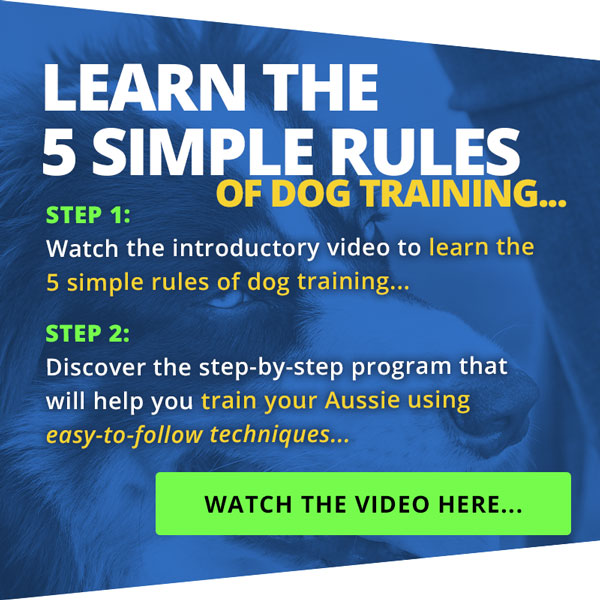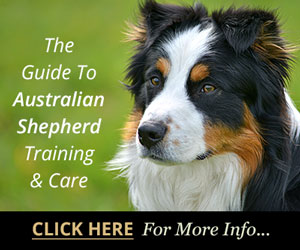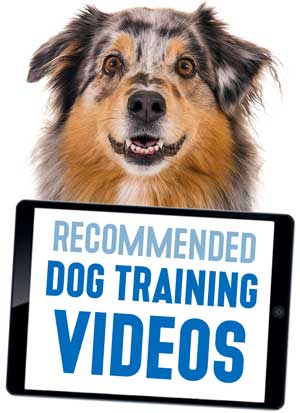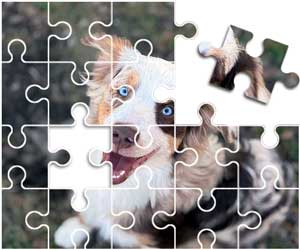
How to Develop Puppy Bite Inhibition in Your New Australian Shepherd
Puppy bite inhibition is an important behavior to teach, for the good of your fingers and toes as well as your puppy himself. The sooner your new Aussie learns what type of mouthing or nipping is acceptable and what isn't, the better off you'll both be. Behaviors that are learned when a dog is young will likely stick with him through the rest of his life so you want to make sure he's getting the right message as early as possible.
What exactly is dog bite inhibition? As the name suggests, it refers to the ability of the dog to control his biting. This is important because, like human toddlers, dogs will have natural curiosity about their surroundings and will explore everything around them by using their mouths. If you've ever had a toddler, especially one who is teething, you've likely seen them go through that phase where they seem to put everything they touch into their mouth.
Puppies are no different and they don't realize that all of those razor sharp teeth of theirs can hurt if they aren't used gently. When puppies play together there will often be some amount of nipping involved and when it becomes too hard, the puppy that is bitten will yelp and turn away from the aggressor. The aggressor will be startled by this reaction and also momentarily pull away. This is a natural form of puppy bite inhibition.
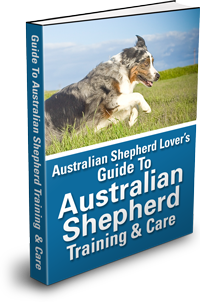
Start with our official ebook Guide To Australian Shepherd Training & Care. It was created by Aussie lovers for Aussie lovers. You can read this practical guide on any computer, tablet, or smartphone.
This is also one of the reasons why you want to leave your puppy with the breeder and not bring them home until they are at least eight weeks old. They are learning these valuable lessons, along with their littermates, right from the start and it will be that much harder for you to have to teach your puppy on your own later.
Fine-Tuning Your Dog's Bite Inhibition
As an owner, you need to teach your pup the same kind of dog bite inhibition so he will learn what amount of biting is acceptable and what isn't.
You can start this by reacting with a yelp or a loud "ow" whenever your puppy's bites become too hard or painful. This should startle your puppy and make him stop. If he does back off, be sure to praise him and then continue with what you were previously doing with him.
If you have done this three times within a 15 minute period and it still isn't working to create puppy bite inhibition, you can then try putting your pup in a "time out" the next time he bites too hard. A time out can range from merely ignoring him for 10-20 seconds to leaving the room or gently putting him in a time-out area for up to 60 seconds before resuming play. That should get the message across that his biting was not acceptable.
Before Puppy Bite Inhibition Is Mastered, Mistakes Will Be Made
While teaching dog bite inhibition is crucial, it's also important to remember that biting during play is not intentional misbehavior and should not be punished. Often, biting is simply a way of releasing excess puppy energy or acting out of boredom. The point isn't dissuading him from biting entirely but rather teaching that your skin is sensitive and his bites can hurt so that he learns to use his mouth gently.
This is particularly important for breeds like the Australian Shepherd that are highly intelligent working dogs and require extra mental and physical stimulation. Also, Aussie's have a natural inclination to nip at feet and heels, which is how they work a herd and keep them in line. Unfortunately, they can also exhibit that same herding tendency with humans, which can become painful and dangerous.
Working with your Aussie on puppy bite inhibition as early as possible will help to channel his excess energy and his herding instinct properly and make life easier for both of you. Aside from the methods mentioned earlier, you can also help to direct his biting by providing plenty of chew toys. If he begins to nip at your fingers or toes, substitute one of the chew toys so he'll learn what is acceptable to chew and what isn't.
Other Options With Puppy Bite Inhibition Training
- If your puppy is nipping at your feet or toes while you walk and you don't have a toy handy, simply freeze and wait for him to stop nipping, then praise him for doing so. Continue this until he learns that nipping while you walk is not acceptable.
- To help expend extra energy as well as encourage puppy bite inhibition, if your pup is nipping you while playing you might try taking him outside and letting him run around or simply take him out for a potty break. Again, this can be particularly helpful with Australian Shepherds who are bred to be working dogs and so require quite a bit of regular activity.
- Since biting and mouthing is a regular part of puppy play, ensuring that your dog has play dates with other puppies can also be beneficial when it comes to teaching dog bite inhibition. You can try taking him to a local dog park or visiting with friends who have dogs after he's already had his puppy shots and is immunized. Just make sure that any puppy roughhousing doesn't get out of hand.
If Necessary, Get Help From a Trainer With Bite Inhibition Training for Your Puppy
If you feel that your pup needs some extra training to learn puppy bite inhibition, you could also consider enrolling him in a good puppy class where he'll have supervised playtime with other puppies or work with a Certified Professional Dog Trainer, who will be able to guide you and your puppy through the proper steps to encourage bite inhibition.
No matter how you go about it, the most important and often most difficult thing to remember when teaching puppy bite inhibition is to be patient. Your pup is full of enthusiasm and energy and he's learning about the world around him. Your role as a responsible owner is to help him develop into a well behaved dog through gentle and caring guidance. If you can manage this when he's a pup, then you'll be rewarded with a loving bond throughout his life.
Have Puppy Training Questions?
Check out this introductory puppy training video...
Have Dog Training Questions?
Check out these introductory dog training videos...
I want my dog to stop being aggressive.
I want some help training my new puppy.
I want my dog to stop barking at everything.
Get Australian Shepherd Info, Website Updates, Special Offers, and Cartoons...
FREE GIFT
You'll also receive a free copy of the ebook
My Everyday Dog Training Tools
by professional dog trainer Daniel Abdelnoor, "Doggy Dan"
